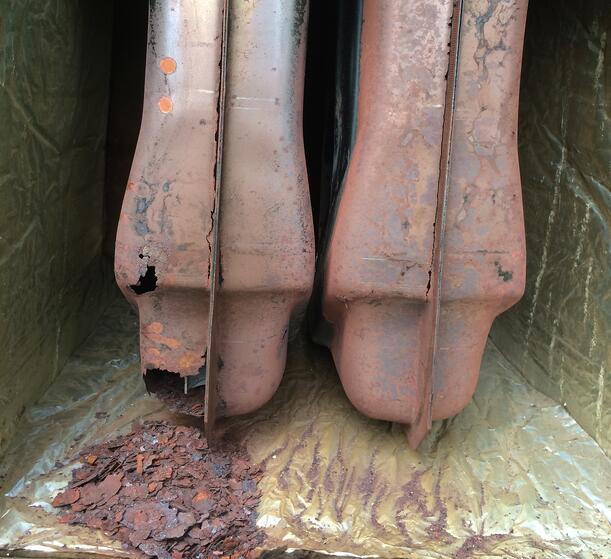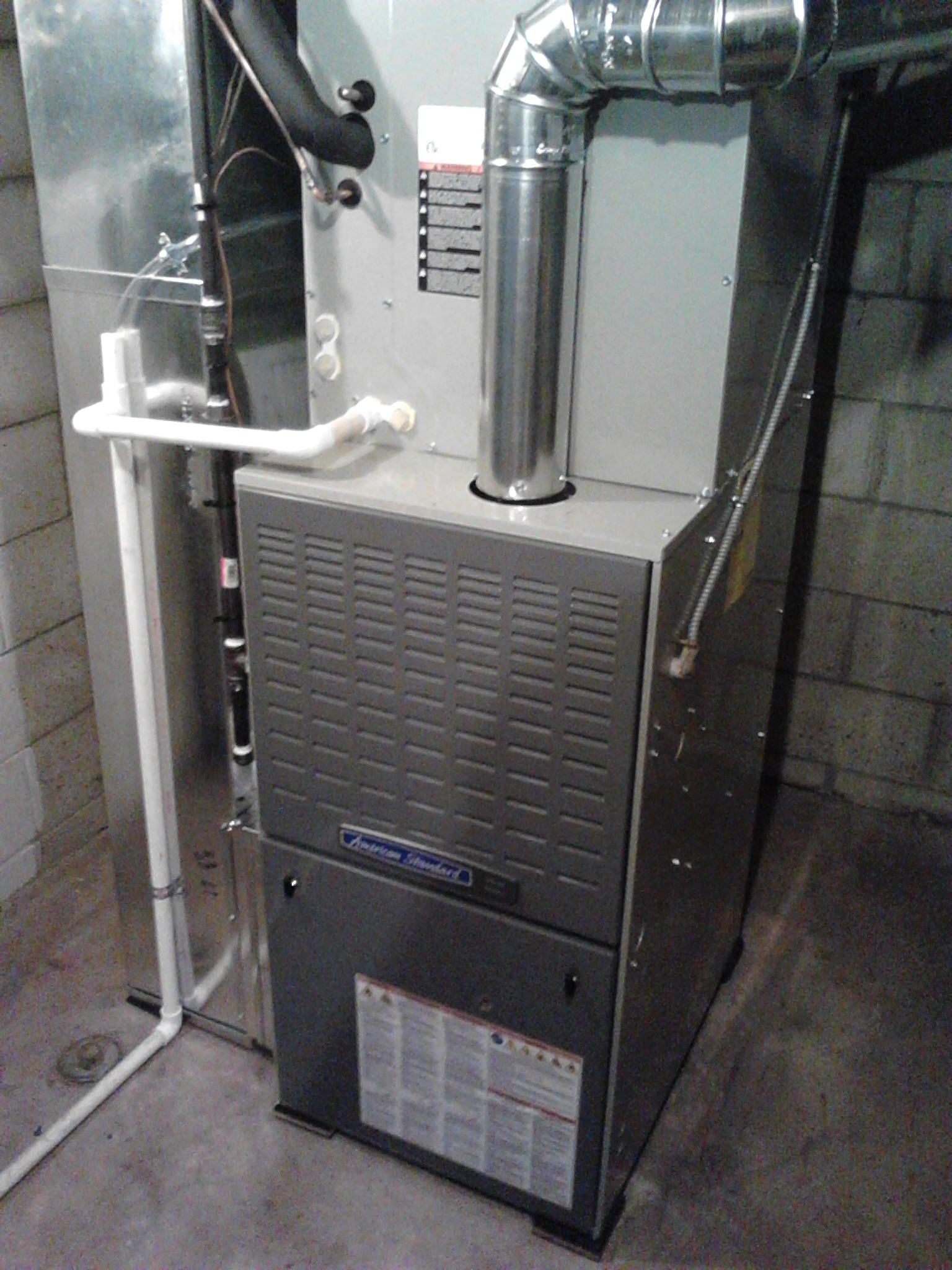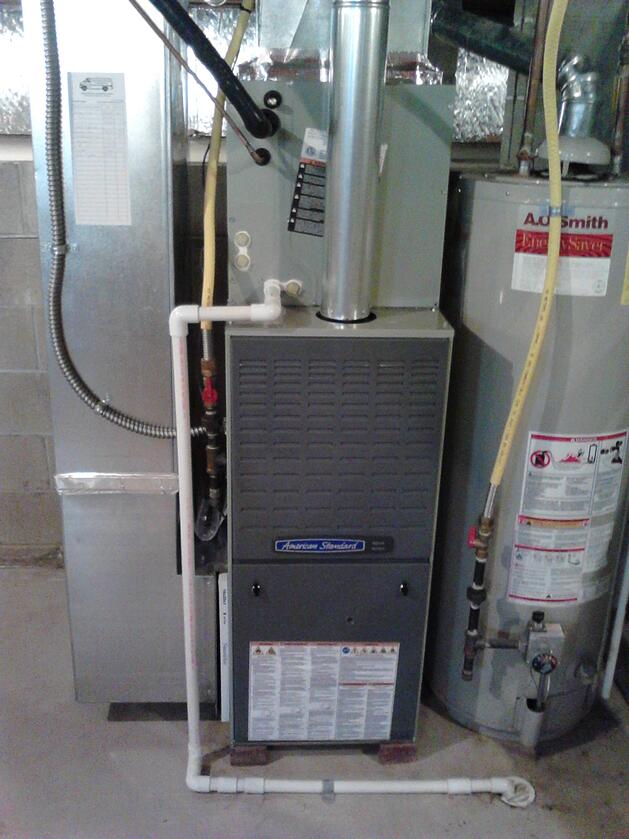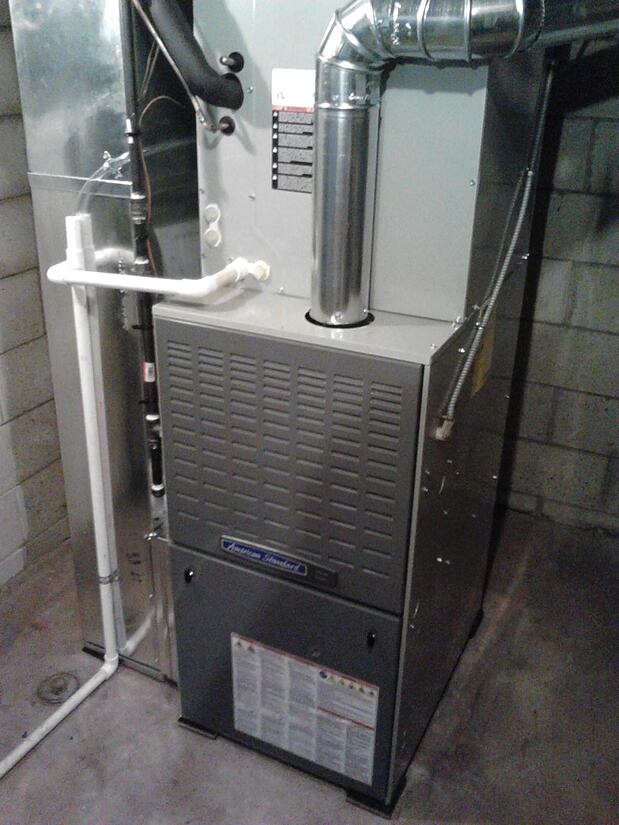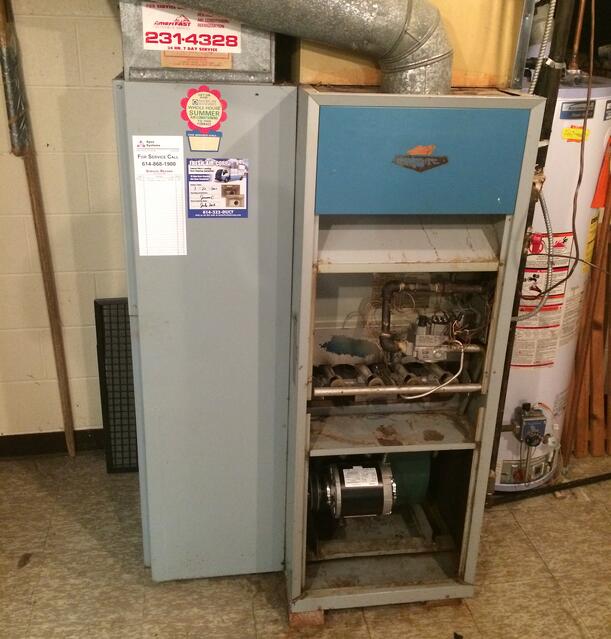
Heating season is right around the corner. Is your furnace ready for another cold winter? If it is working, do you know how efficient it is? Is your furnace clean and functioning properly? Or maybe more importantly, is your furnace operating safely? These are all questions that can be answered by scheduling an inspection by your local HVAC service company.
Does your furnace look like the furnace pictured above? If so, you might want to have it inspected soon. this furnace above had a defective heat exchanger and the gas valve control was leaking gas into the home. It was also operating inefficiently and wasting gas. It was time to replace the furnace.
During the month of September and October, most furnace manufacturers offer rebates in the range of $100-$400 for certain high efficiency model furnaces. By November, most rebates are no longer available. So, if you have been thinking of replacing your furnace, the sooner the better.
If you are not considering a furnace replacement at this time, it is still a good idea to set up an appointment to have a service tech inspect your furnace to insure that it is clean, and operating efficiently and safely. If the furnace is operating safely but has dirt and maintenance issues, then cleaning your furnace can save on gas and electric usage by the furnace over the season, not to mention that you will more than likely extend the lifespan of various components such as motors, capacitors, ignitors, and integrated controls as well as the furnace itself. An annual furnace inspection will likely pay for itself in lower utility bills and fewer breakdowns.
What does a typical furnace inspection include? A furnace inspection includes checking the cleanliness of the filter, blower wheel, and indoor coil (if accessible or necessary), and inspecting ductwork for adequacy. If any of these things are an issue, it can cause the furnace to run warmer than designed due to a reduction in airflow. These are things the service tech can discover and discuss options with you. Also, the service tech will inspect the burners, heat exchanger, and flue for proper combustion and venting. An issue with combustion or venting can cause the furnace to operate inefficiently and could also be a potential safety issue which the technician can address for you. The technician will also check motor amp draws, safety controls, and your thermostat to be sure everything is functioning properly.
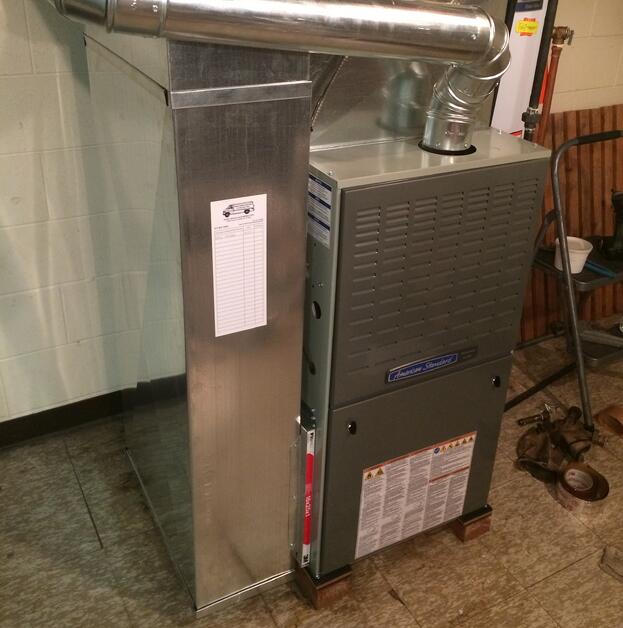
Here is the new furnace that replaced the one above. It is more efficient, has warranties, and this model also has a special blower motor called a "variable speed" motor. This motor delivers airflow a lot better than the old belt drive motor ever did. The customer noticed this right away and was pleasantly surprised by this.
You may also sign up for an annual maintenance agreement. This includes the furnace inspection as well as several cleanings. The annual furnace maintenenance program can give you peace of mind about your furnace. It's never too late to sign up!
If you do not remember the last time you had your furnace inspected, then this blog is for you! It can not be stressed enough how important regular maintenenance is for your furnace.
Do not wait until the cold weather hits and your furnace goes down to call. You may have to go without heat for a day or two until your furnace can be replaced and the rebates will be gone by then as well.
So call today to schedule your furnace inspection before the cold weather rolls in!
Our phone number is 614-837-5062.
Thank you, and I hope this info was useful to you.
Jim Harless
Minutemen Heating and Cooling.

